5 Main Categories of Different Types of Chicken Feed
In modern farming, feed is not only a major cost but also directly impacts poultry health and performance. With clear differences in nutrition, usage stages, and effectiveness, it's crucial to classify feed from various angles. This helps farmers better understand each feed type and make more targeted feeding decisions.

1. By Physical Form
The form of feed directly affects poultry feed intake efficiency, waste levels, and the balance of nutrient absorption.
Mash
Mash is made by grinding and mixing raw materials. It's cost-effective and flexible, allowing formula adjustments. However, it clumps easily, creates dust, and can lead to picky eating, poor nutrient intake, and more feed waste.
Pellet
Pellets are made by pressing mash into compact pellets, ensuring even nutrient distribution and better palatability. Chickens eat more actively, and pellets are easier to transport and store with less waste.
The downside is the extra production step and equipment costs, but pellets are the most widely used in large-scale farming.
Crumble
Crumbled feed is made by breaking pellets into smaller pieces, making it perfect for chicks or transition stages. It maintains the balanced nutrition and palatability of pellets while preventing feeding issues caused by large particles. It's commonly used when transitioning chicks from starter to grower feed.
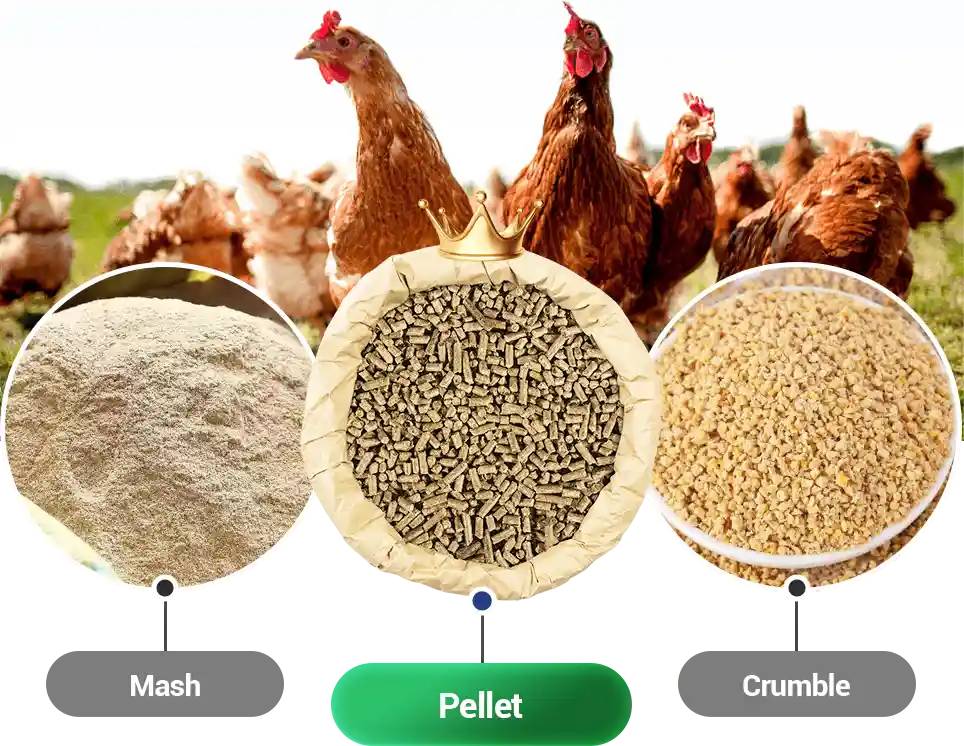
2. By Growth Stage
This classification follows the natural growth stages of chickens, matching their evolving nutritional needs from birth to maturity.
Starter Feed
During the chick stage (0–6 weeks), feed promotes growth and helps chicks reach the 7-day weight target. It's nutrient-dense (3000 kcal/kg, 20-22% protein), easy to digest, and supports rapid bone and muscle development. Crumbled feed is preferred for better palatability, boosting intake and reducing waste.
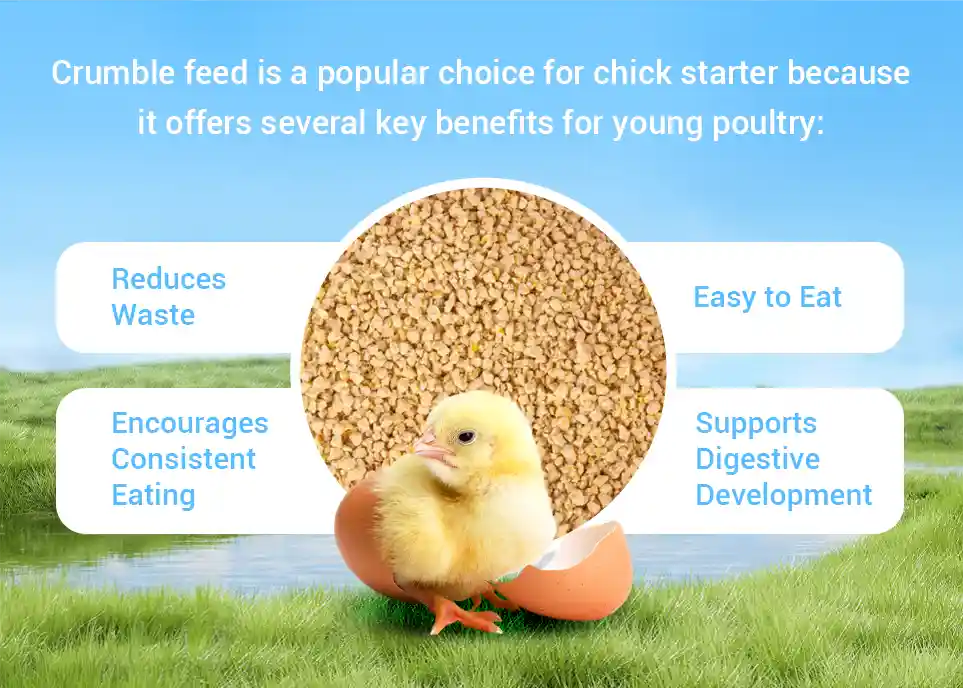
Grower Feed
At 6 weeks, chicks can start on grower feed, which has 16-18% protein. This supports steady growth while protecting bone development. The balanced formula helps them grow healthy until they begin laying.
Don't feed layer feed before 18 weeks, as its high calcium can harm the kidneys. If grower feed isn't available, you can continue with starter feed, but switch to a non-medicated formula after 16 weeks.
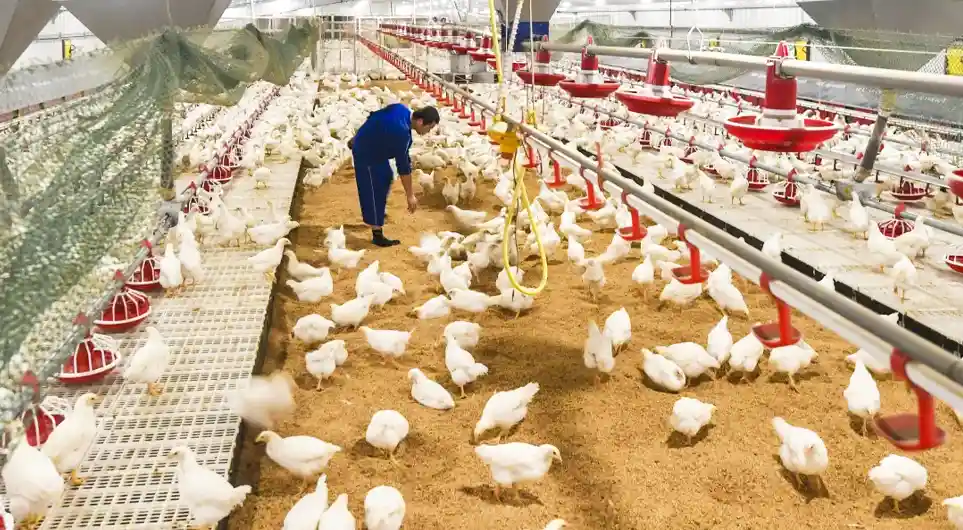
Finisher Feeds
Fattening feed is used in the final stage before broilers are harvested. It has higher energy and slightly lower protein (15-17%) to encourage feed intake and rapid weight gain. The focus is on energy density and palatability, usually in pellet form.
This feed is typically free of medications to avoid residue risks. Proper control of feeding time and amount ensures the ideal weight and safe meat quality.
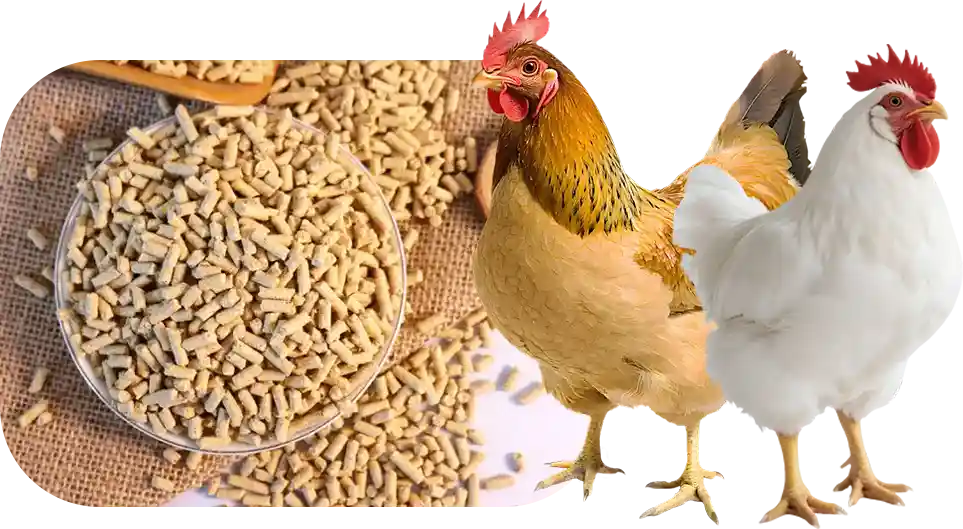
3. By Production Purpose
Once chickens reach adulthood (laying phase), their feed is tailored to meet specific production goals, with clear differences in nutrition and formula for different purposes.
Layer Feed
Layer feed is designed with high calcium (3.5–4%), phosphorus, and vitamin D to ensure strong eggshells and stable egg production. Protein is kept at 16–18% to support egg production without causing obesity.
It focuses on long-term stability, meeting hens' energy needs while maintaining health, and ensuring consistent egg yield and quality.
Here provides detailed information on feed formulas for laying hens. For more, visit What Is the Best Feed for Laying Hens.
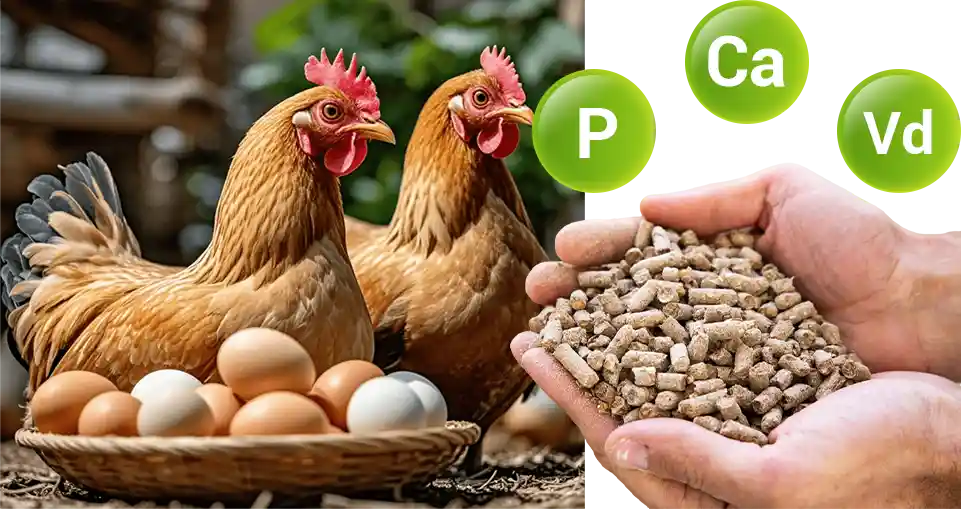
Broiler Feed
Broiler feed has a higher energy level to promote rapid weight gain and maintain a good feed-to-meat ratio.
Farmers should select the right feed for each growth stage, such as starter, grower, and finisher feed, to ensure proper nutrition and healthy growth. However, overfeeding can lead to excessive weight gain, affecting meat quality and increasing feed costs.
This blog offers in-depth insights into feed formulas tailored for broilers to support rapid growth. To explore more, visit Broiler Feed Formulas and Ingredients for Rapid Growth.
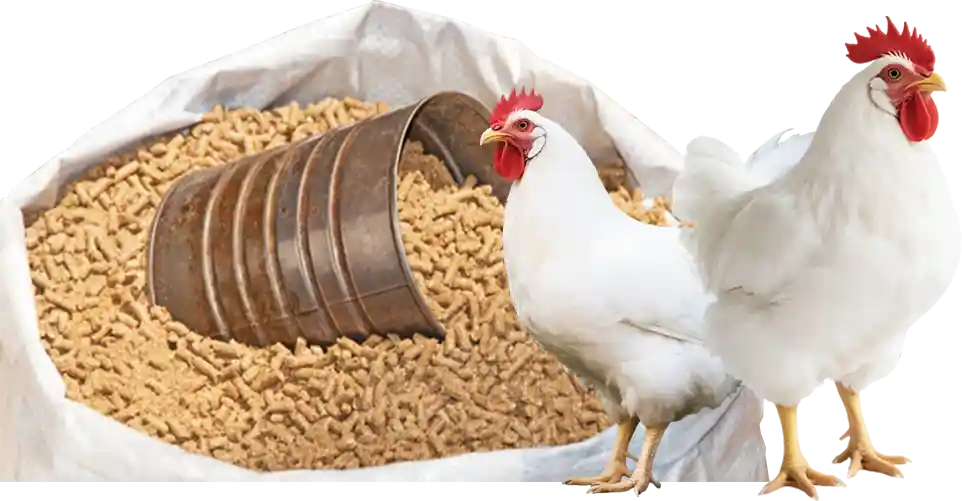
Breeder Feed
Breeder feed supports egg quality and hatchability by balancing energy and protein for healthy egg production. It's enriched with calcium, phosphorus, vitamins A and E, and trace minerals like zinc and selenium to strengthen eggshells and aid embryo development.
Always choose "breeder feed" to avoid affecting fertility and chick health.
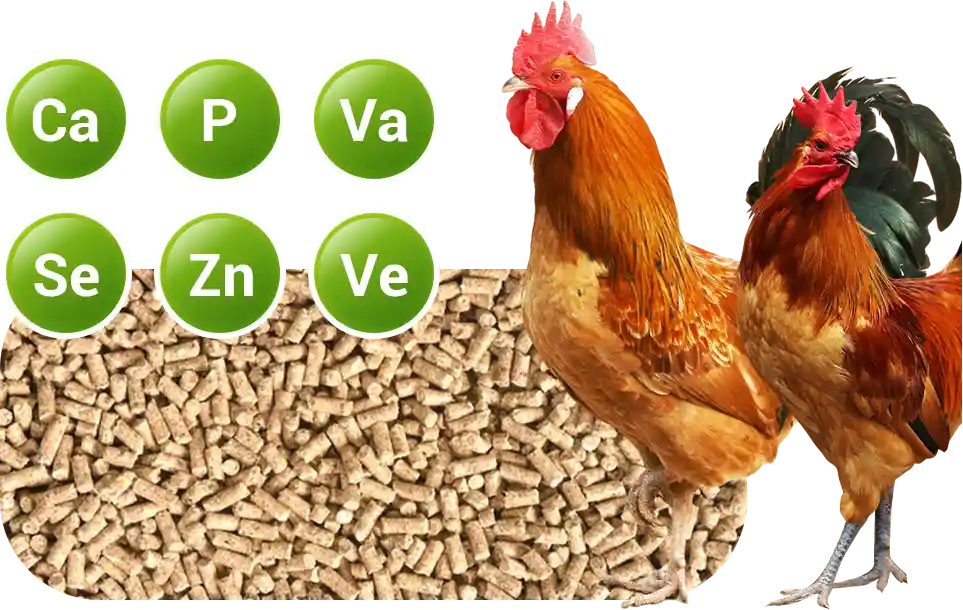
4. By Formula Attributes
This classification is based on the feed's nutritional completeness and whether specific functional ingredients are added.
Complete Feed
Complete feeds are well-balanced and formulated to meet the nutritional needs of chickens at different growth stages. They contain essential components like energy, protein, vitamins, and minerals, and are ready to use straight from the bag.
These feeds are commonly found on the market and are the most widely used in small to medium-scale farming.
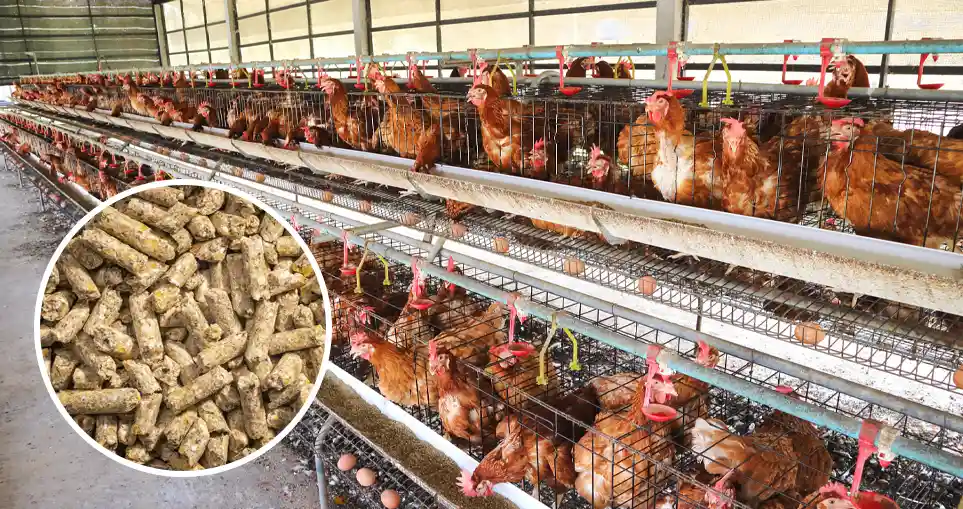
Organic Feed
Organic feed is made from certified organic ingredients like corn, soybeans, and alfalfa, processed without synthetic additives or antibiotics. It focuses on natural, safe, and sustainable qualities, with ingredients mainly from organic farming.
Due to higher production costs, organic feed is aimed at the premium market, ideal for farming models that prioritize food safety and quality.
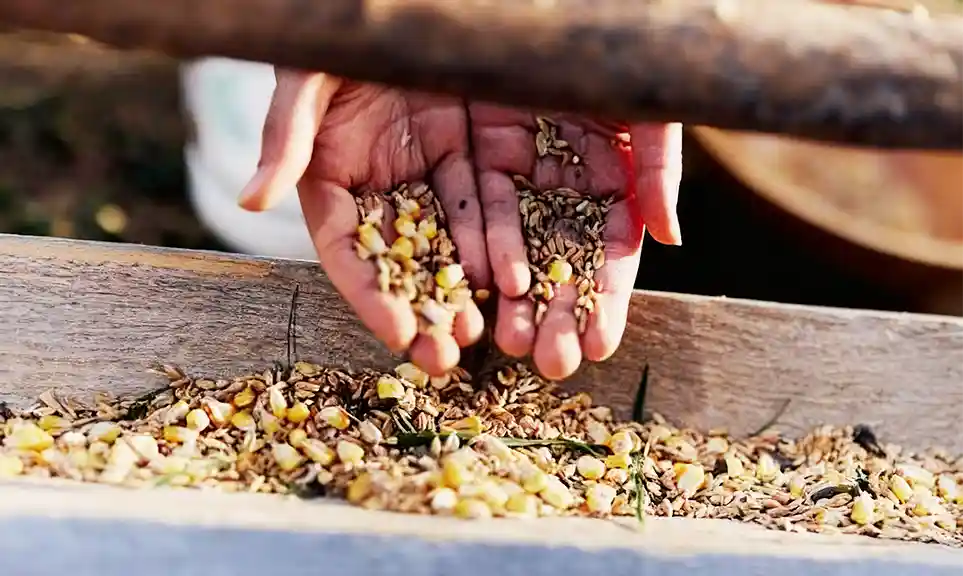
Medicated Feed
Medicated feed is used for chicks, adding approved medications to reduce disease and improve survival. Common additives include anticoccidials (like Maduramicin, Monensin) for coccidiosis prevention, antibiotics (such as Chlortetracycline, Tylosin) for respiratory and digestive infections, and dewormers (like Levamisole) to control parasitic worms.
It's important to follow regulations and withdrawal periods to ensure both production performance and food safety.
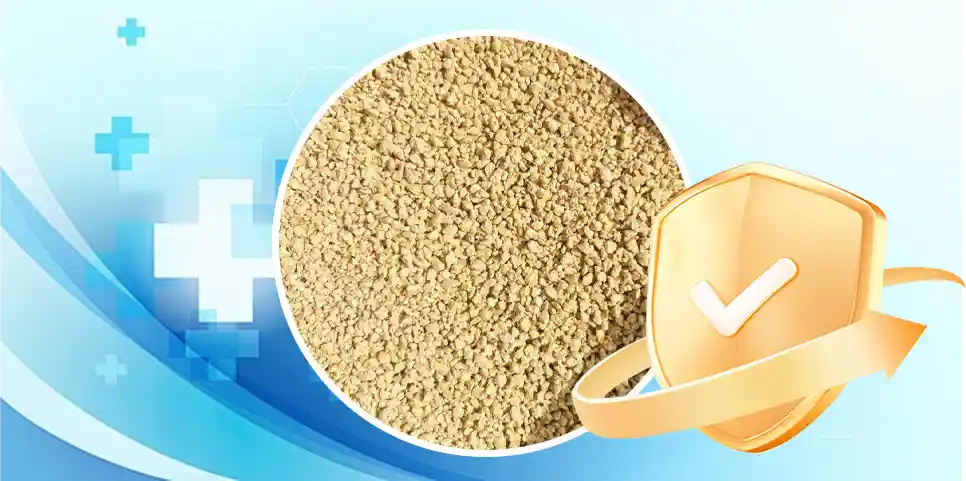
Antibiotic-Free Feed
Antibiotic-free feed contains no antibiotics throughout the entire feeding cycle. It often includes probiotics, yeast, plant extracts, or organic acids to balance gut health, boost immunity, and reduce disease risk.
This type of feed meets the growing demand for antibiotic-free farming and food safety, helping to reduce drug residues and ensure meat and egg quality.
Fermented feed
Fermented feed is made by using beneficial microbes (such as lactic acid bacteria, yeast, and Bacillus subtilis) to ferment raw feed ingredients. The fermentation process breaks down indigestible components, producing lactic acid and beneficial bacteria, making the feed easier for chickens to digest and absorb.
Fermented feed is typically used as a supplement, not a complete replacement for full-formula feed.
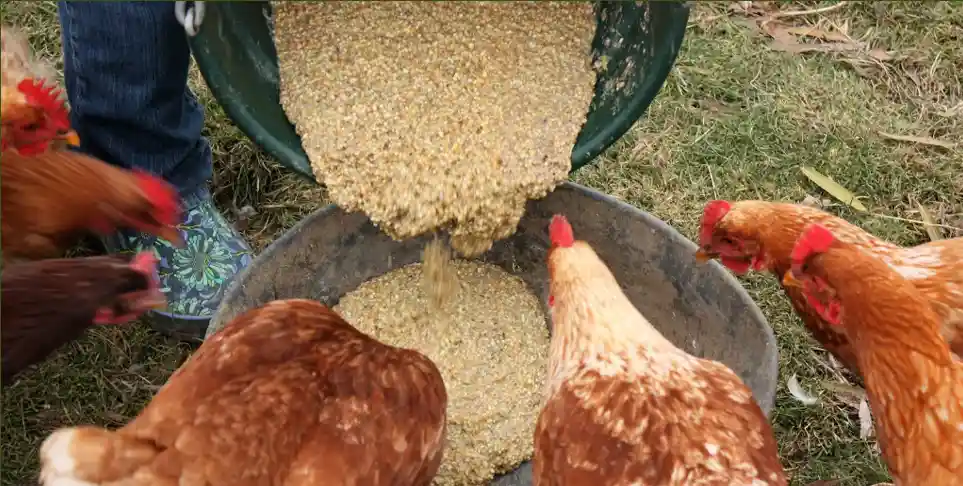
5. By Essential Supplements
Strictly speaking, these are not considered feed itself, but as independent supplements, they are essential for maintaining chicken health and production performance.
Oyster or Shell Grit
Oyster shell powder or crushed shell is a key calcium source for laying hens, promoting strong eggshells and healthy bones. It releases calcium slowly, offering a steady supply, especially overnight, to improve eggshell quality.
Chickens need grit to help grind food, as they don't have teeth. They naturally store it in their gizzard, where it helps break down food for better digestion. Without grit, digestion can be impaired, leading to potential blockages.

Scratch
Scratch is a mix of whole or coarsely crushed grains like corn, wheat, and barley.
It's not nutritionally complete, so it should be used as a supplement, not a main feed. Typically scattered on the ground, it encourages chickens to peck and scratch, providing energy, satisfying their instincts, and reducing pecking and fighting while promoting more activity and feeding interest.
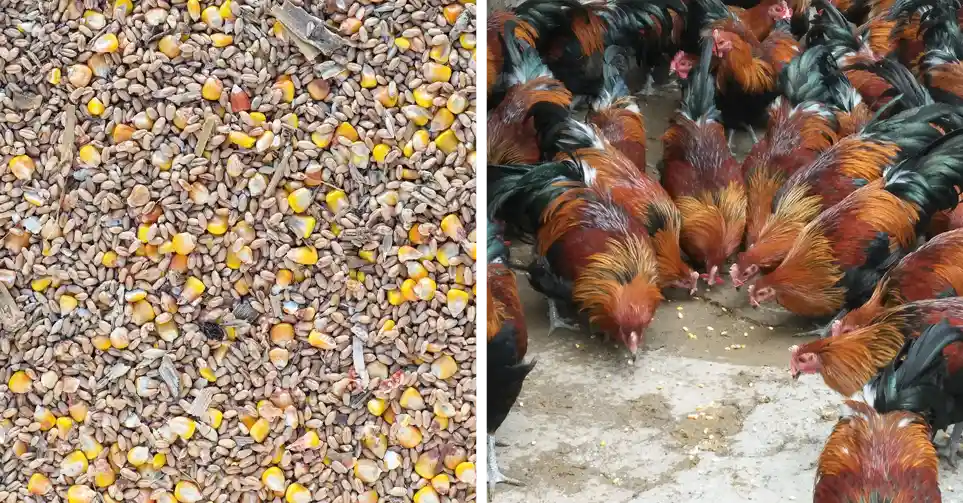
Hope the feed classification and usage points provided offer valuable insights for selecting and pairing chicken feed, helping you create a more scientific feeding strategy based on your flock's specific needs.

 Online Contact
Online Contact Send Message
Send Message
Need Some Help?
Contact us quickly and we will reply you within 24 hours. We will not disclose your information.